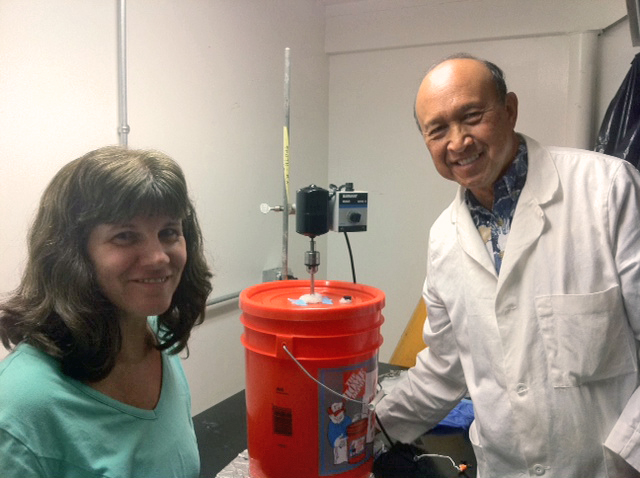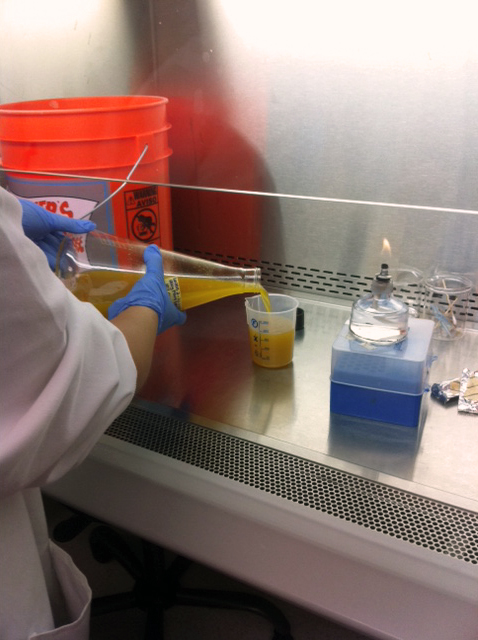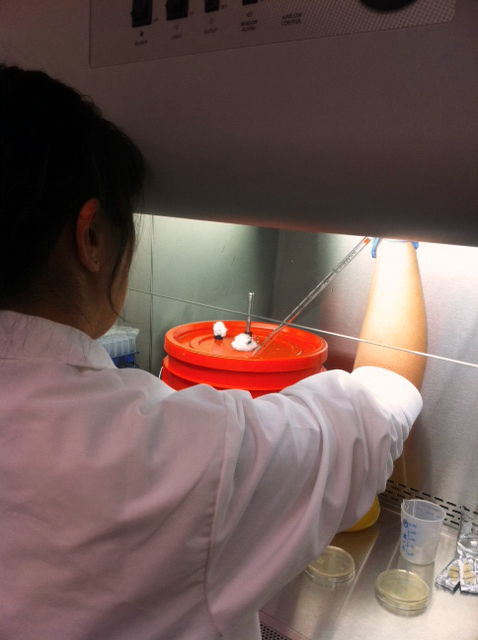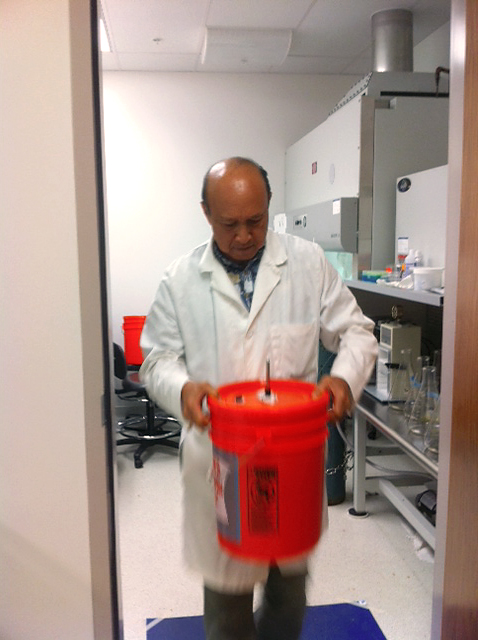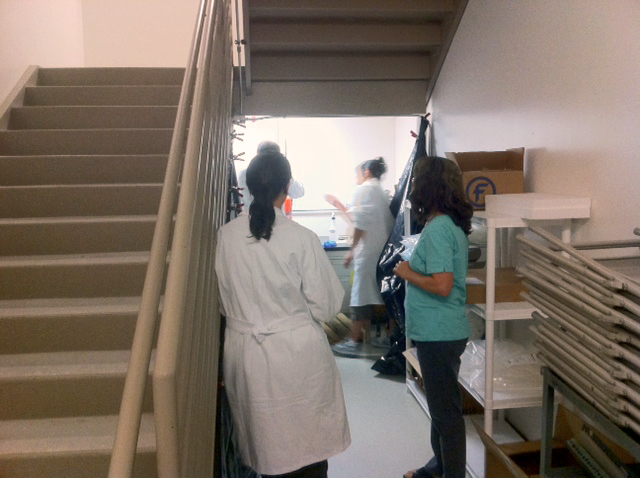The scientists at Pacific Basin Agriculture Research Center (PBARC) in Hilo are pursuing their project of “zero waste.” The objective is to utilize all the byproducts of agriculture production in a sensible way.
Their funding had been cut to the bone. But Director Dennis Gonsalves and the scientists there are refusing to give up. They are doing it because they believe in sustainability for Hawai‘i.
This is Marissa Walls, research food technologist at PBARC, and Dennis Gonsalves.
I wrote previously about their algae-to-oil for waste papaya. They started with a test tube of a specially evolved algae that preferred papaya as its food, and it produced oil.
They started the papaya algae-to-oil trial at a 1-liter scale.
This is a short video clip of the algae on a shaker.
Now they are scaling up the process to a 5-gallon size. I was there to witness the first batch being done. First they took the papaya mixture into a special hood, where filtered air was brought in causing positive air flow out of the front. This prevented unfiltered air to come in from the outside.
Just before taking the 5-gallon bucket to the next room, they took a sample of the mixture to test for contamination. If mixture is contaminated by something that grows faster than the algae, they’ll know.
Here is Dr. Gonsalves transferring the first of the 5-gallon batch. Note that the bucket is a plain plastic bucket. They got it from Home Depot.
Because they don’t have funding for a lab, they are using a space under the stairwell of the PBARC building. The algae functions in the dark, so they have black plastic taped to the stairwell to maintain the dark.
There the mixture will be constantly stirred. Instead of a shaker, the 5-gallon bucket mixture is agitated by what looks like a paint mixer.
Dr. Gonsalves tells me that they are getting batches of new evolved algae as they go along, and after a bunch of tweaking by these smart scientists, they have got the oil yield up to 35 percent. After the 5-gallon scale, they will go to 50-gallon and then to 1000 gallons. The mixing, sterilizing and dewatering procedures will change as appropriate for each scale.
I can very easily relate to that. It’s exactly what we did when we scaled up our farm from one acre to 600 acres. These are common sense scientists. I could not be more impressed.
One of the scientists is now looking into the nutritional content of the leftover algae cake. I can’t wait to see if it can be used for fish food. Just imagine, farm waste to oil and then the leftover for fish food. Sounds like common sense to me.
Dr. Gonsalves’ objective is to have real numbers and actual oil for evaluation within a year.
This project is impressive because it focuses on value to society as its end result. Many times, money as an end result goal takes us in a direction we don’t want to go. This project’s focus, and its methods, are simple and practical.
We farmers characterize it as common sense. Nowadays, that is high praise.

